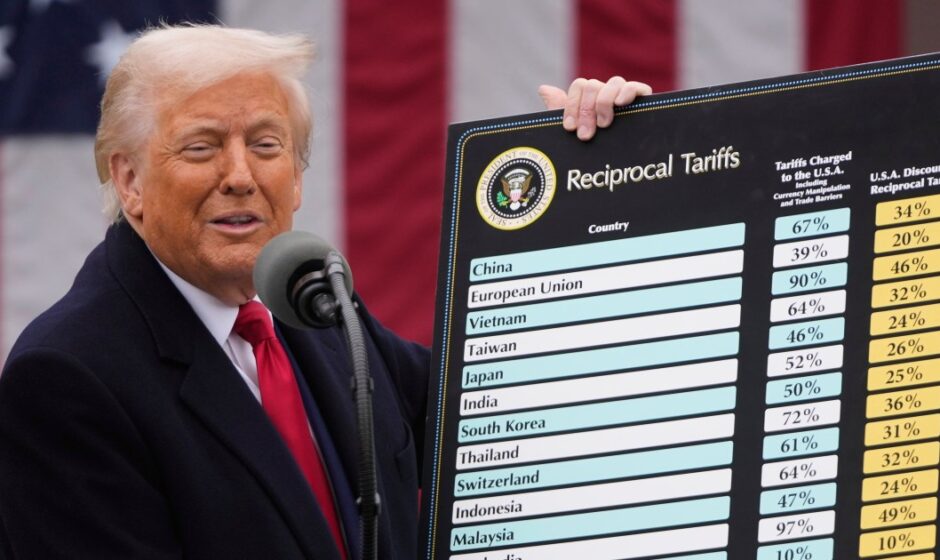When United States President Donald Trump unveiled his steep “reciprocal” tariffs on dozens of countries in April, economists issued warnings of catastrophic economic harm.
So far, their fears have not materialised.
The US economy – the single biggest driver of global growth – has defied expectations across numerous metrics, with inflation staying low, employment and consumer spending remaining robust, and the stock market reaching record highs.
Still, even if the limited fallout from Trump’s tariffs has taken some analysts by surprise, economists warn that the US and global economies may just be experiencing the calm before the storm.
Dozens of US trade partners, including close allies such as South Korea and Japan, are facing tariffs of 25 percent to 40 percent unless they seal trade deals with the Trump administration by an August 1 deadline.
“When you start to see tariffs at 20 or more, you reach a point where firms may stop importing altogether,” Joseph Foudy, an economics professor at the New York University Stern School of Business, told Al Jazeera.
“Firms simply postpone major decisions, delay hiring, and economic activity declines,” Foudy added.
“The uncertainty around trade in that sense is as costly as the actual tariff rates.”
Even countries that are able to hammer out a deal in time are likely to face significantly higher duties.
Trump’s preliminary agreements with Vietnam and China, announced in May and early July, respectively, stipulate minimum tariff rates of 20 percent and 30 percent.
On Friday, the Financial Times reported that Trump was pushing for a tariff of 15-20 percent on the European Union, which is the US’s single largest trading partner and is facing a 30 percent duty from August 1, in any deal reached with the bloc.
Ursula von der Leyen, the president of the European Commission, has warned that Trump’s mooted 30 percent tariff would “disrupt essential transatlantic supply chains, to the detriment of businesses, consumers and patients on both sides of the Atlantic”.

‘Harm growth’
“In my view, the few tariff agreements that have been reached represent nontrivial changes in US trade policy and so will harm growth, so even if much less extreme than threatened, will matter,” Steven Durlauf, a professor of economics at the University of Chicago, told Al Jazeera.
Economists widely agree that the impact of tariffs implemented so far has not been fully felt, as many businesses built up their stockpiles of inventories in advance to mitigate rising costs.
Under the existing measures – including a baseline 10 percent duty on nearly all countries, and higher levies on cars and steel – the effective average US tariff rate currently stands at 16.6 percent, with the rate set to rise 20.6 percent from August 1, according to The Budget Lab at Yale Department of Economics.
Even if Trump does not sharply hike tariffs on August 1, economists expect inflation to rise at least somewhat in the coming months, with higher prices in turn likely to drag on growth.
In an analysis published last month, BBVA Research estimated that even the current level of US tariffs could reduce global gross domestic product (GDP) by 0.5 of a percentage point in the short term, and by more than 2 percentage points over the medium term.
“It is too soon to expect big effects on prices in the US, as there was a large increase in exports to the US in anticipation of higher tariffs, and firms are waiting to see where things will end up in terms of tariffs that affect them. So, not surprising, we have seen limited effects so far,” Bernard Hoekman, director of Global Economics at the Robert Schuman Centre for Advanced Studies at the European University Institute in Florence, Italy, told Al Jazeera.
“But if the US does what it has indicated it wants to do – raise average tariffs to the 20-30 percent level – there will be a much larger impact.”
Trump and his allies have repeatedly dismissed economists’ warnings about his tariffs, pointing to the steady stream of positive data to make the case that the economic consensus is flawed.
“The Fake News and the so-called ‘Experts’ were wrong again,” Trump wrote on Truth Social in response to a recent report from his Council of Economic Advisers (CEA) that found prices of imported goods fell by 0.1 percent from December to May.
“Tariffs are making our Country ‘BOOM.’”

The CEA report’s methodology drew criticism from some economic analysts, with the National Taxpayers Union saying it failed to take account of stockpiling by importers and covered a period that was “way too short to draw any definitive conclusions”.
Despite the strong headline figures on the US economy, economists have also pointed to warning signs in the data.
In a note last week, Wells Fargo economists Tim Quinlan and Shannon Grein pointed out that discretionary spending on services in the US fell 0.3 percent in the year up to May, indicating potential economic storm clouds ahead.
“That is admittedly a modest decline, but what makes it scary is that in 60+ years, this measure has only declined either during or immediately after recessions,” Quinlan and Grein said.
Durlauf, the University of Chicago professor, said the Trump administration had little cause to see the relative health of the economy up until now as a vindication of its economic plans.
“First, there is widespread belief that tariff threats will not be realised in actual agreements. Second, the effects of tariffs on prices and output take some time to work through the system,” Durlauf said.
“There is no sense that the absence of large effects on real activity and inflation, so far, in any way vindicate claims of the Trump administration.”
#Trumps #tariff #deadline #looms #economists #calm #storm #Trade #War


